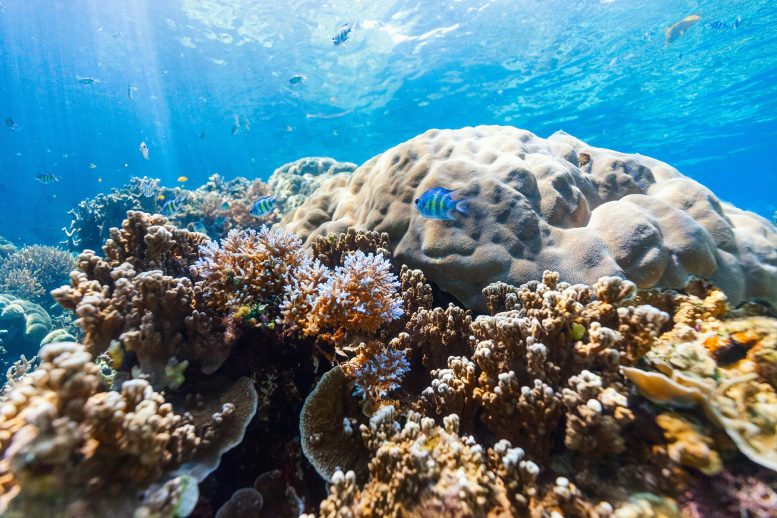
A new study seeks to establish a common understanding of Symbiodiniaceae diversity, according to lead author Dr. Sarah Davis and her international team of scientists. Symbiodiniaceae, a family of marine plankton known for symbiotic relationships with reef-building corals and other marine invertebrates, is critical to the conservation and restoration of threatened coral reefs worldwide. Despite strides in Symbiodiniaceae genomics, differing interpretations of genetic data have created barriers to progress in the field.
Researchers led by Dr. Sarah Davis have published a study in the journal PeerJ Life and Environment aiming to build consensus on the understanding of Symbiodiniaceae, a type of marine plankton vital to coral reef health. The team highlights the need for agreed interpretation of genetic data, collaboration, and the use of new technologies to address knowledge gaps and advance coral reef science.
New research published today (May 2) in the journal PeerJ Life and Environment by Dr. Sarah Davis and sixty-one scientists from 12 countries presents a perspective to build consensus around the assessment and interpretation of Symbiodiniaceae diversity. Symbiodiniaceae is a family of marine dinoflagellates (plankton) notable for their symbiotic associations with reef-building corals, sea anemones, jellyfish, marine sponges, and other marine invertebrates. Understanding Symbiodiniaceae is important to those working to protect and regenerate coral reefs that are under threat around the world.
“The authors hope this paper will provide a springboard to launch novel, transformative investigations into coral symbiosis at this critical juncture for reefs,” said Dr. Sarah Davis.
Despite advances in Symbiodiniaceae genomics, a lack of consensus among researchers with respect to interpreting genetic data has slowed progress in the field and acted as a barrier to reconciling observations. The authors identify key challenges regarding the assessment and interpretation of Symbiodiniaceae genetic diversity across three levels: species, populations, and communities.
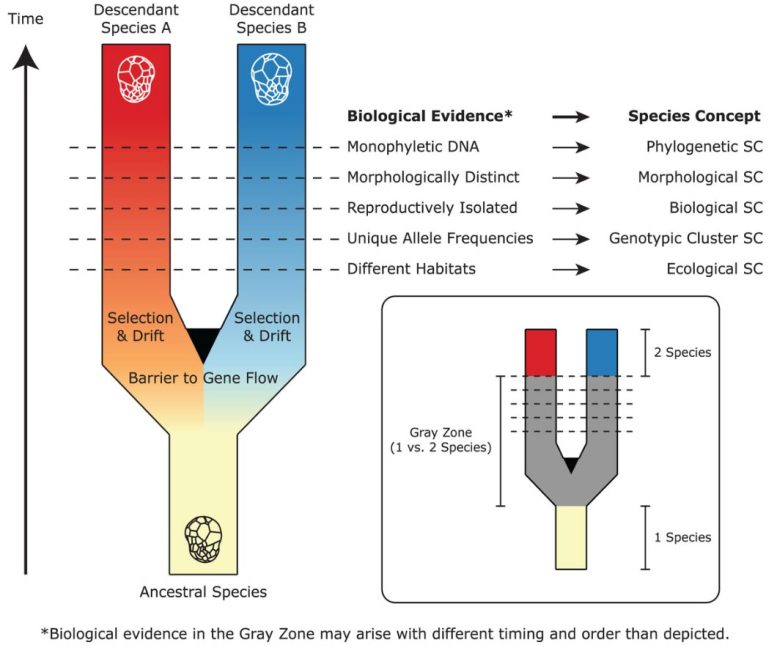
A simplified representation of Symbiodiniaceae speciation, species concepts (SC), and associated biological evidence. Credit: PeerJ Life and Environment
“This manuscript was the result of an NSF-funded workshop aimed at bringing members of the Symbiodiniaceae research community together to discuss past scientific disagreements, identify areas of shared consensus, and craft a more inclusive path forward,” said Dr. Sarah Davis.
The research summarizes areas of agreement and highlights techniques and approaches that are broadly accepted. In areas where debate remains, the authors identify unresolved issues and discuss technologies and approaches that can help to fill knowledge gaps related to genetic and phenotypic diversity.
“We also discuss ways to stimulate progress, in particular by fostering a more inclusive and collaborative research community. We hope that this perspective will inspire and accelerate coral reef science by serving as a resource to those designing experiments, publishing research, and applying for funding related to Symbiodiniaceae and their symbiotic partnerships” write the authors.
Reference: “Building consensus around the assessment and interpretation of Symbiodiniaceae diversity” by Sarah W. Davies, Matthew H. Gamache, Lauren I. Howe-Kerr, Nicola G. Kriefall, Andrew C. Baker, Anastazia T. Banaszak, Line Kolind Bay, Anthony J. Bellantuono, Debashish Bhattacharya, Cheong Xin Chan, Danielle C. Claar, Mary Alice Coffroth, Ross Cunning, Simon K. Davy, Javier del Campo, Erika M. Díaz-Almeyda, Jörg C. Frommlet, Lauren E. Fuess, Raúl A. González-Pech, Tamar L. Goulet, Kenneth D. Hoadley, Emily J. Howells, Benjamin C. C. Hume, Dustin W. Kemp, Carly D. Kenkel, Sheila A. Kitchen, Todd C. LaJeunesse, Senjie Lin, Shelby E. McIlroy, Ryan McMinds, Matthew R. Nitschke, Clinton A. Oakley, Raquel S. Peixoto, Carlos Prada, Hollie M. Putnam, Kate Quigley, Hannah G. Reich, James Davis Reimer, Mauricio Rodriguez-Lanetty, Stephanie M. Rosales, Osama S. Saad, Eugenia M. Sampayo, Scott R. Santos, Eiichi Shoguchi, Edward G. Smith, Michael Stat, Timothy G. Stephens, Marie E. Strader, David J. Suggett, Timothy D. Swain, Cawa Tran, Nikki Traylor-Knowles, Christian R. Voolstra, Mark E. Warner, Virginia M. Weis, Rachel M. Wright, Tingting Xiang, Hiroshi Yamashita, Maren Ziegler, Adrienne M. S. Correa, John Everett Parkinson, 2 May 2023, PeerJ Life and Environment.
DOI: 10.7717/peerj.15023

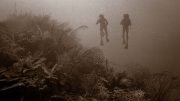
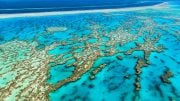
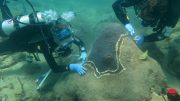
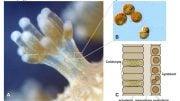
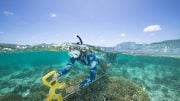
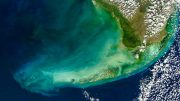
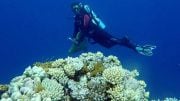
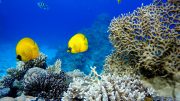
Be the first to comment on "Plankton Power: How Understanding Symbiodiniaceae Could Save Coral Reefs"